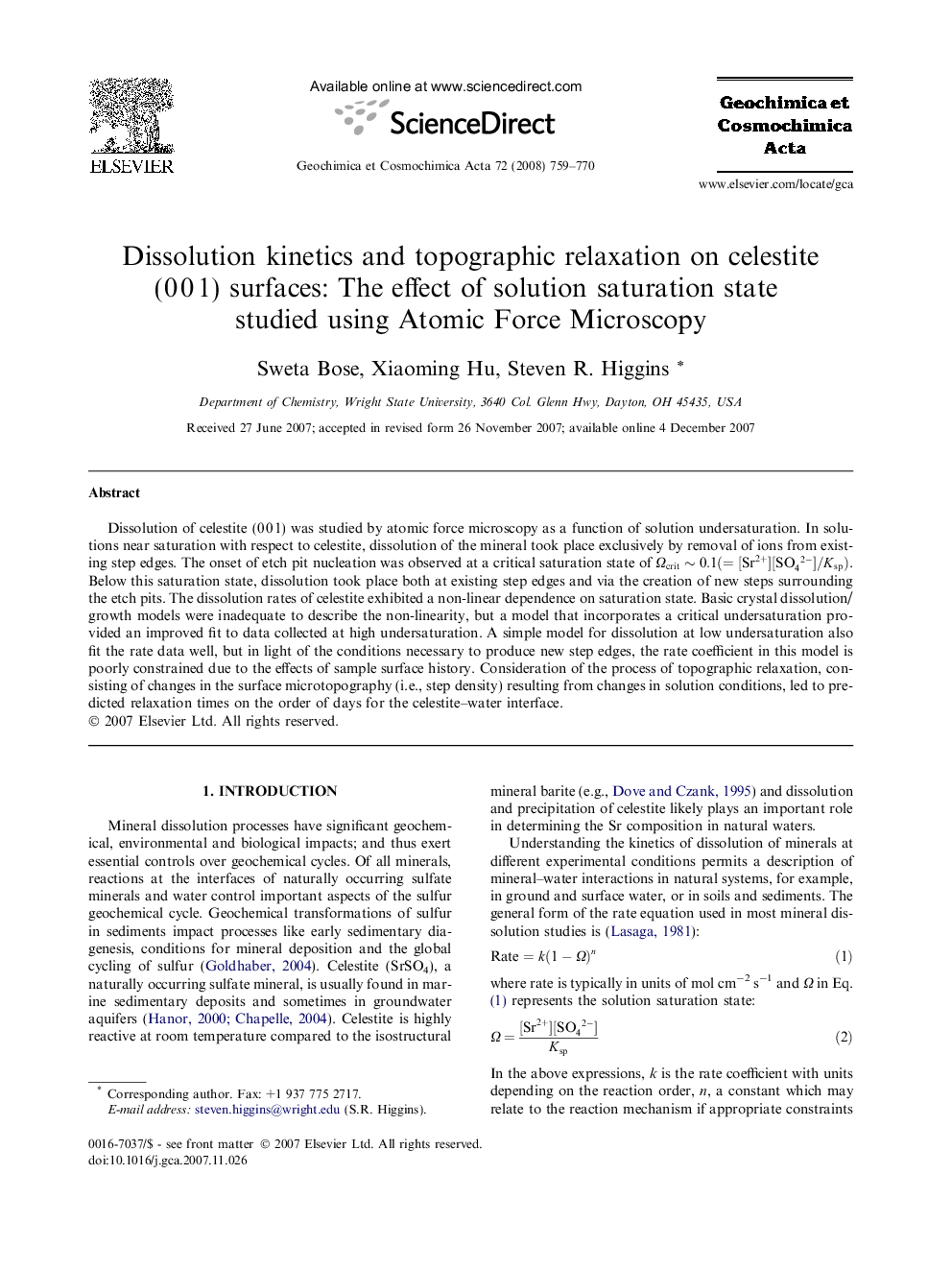| Article ID | Journal | Published Year | Pages | File Type |
|---|---|---|---|---|
| 4705182 | Geochimica et Cosmochimica Acta | 2008 | 12 Pages |
Abstract
Dissolution of celestite (0 0 1) was studied by atomic force microscopy as a function of solution undersaturation. In solutions near saturation with respect to celestite, dissolution of the mineral took place exclusively by removal of ions from existing step edges. The onset of etch pit nucleation was observed at a critical saturation state of Ωcritâ¼0.1(=[Sr2+][SO42-]/Ksp). Below this saturation state, dissolution took place both at existing step edges and via the creation of new steps surrounding the etch pits. The dissolution rates of celestite exhibited a non-linear dependence on saturation state. Basic crystal dissolution/growth models were inadequate to describe the non-linearity, but a model that incorporates a critical undersaturation provided an improved fit to data collected at high undersaturation. A simple model for dissolution at low undersaturation also fit the rate data well, but in light of the conditions necessary to produce new step edges, the rate coefficient in this model is poorly constrained due to the effects of sample surface history. Consideration of the process of topographic relaxation, consisting of changes in the surface microtopography (i.e., step density) resulting from changes in solution conditions, led to predicted relaxation times on the order of days for the celestite-water interface.
Related Topics
Physical Sciences and Engineering
Earth and Planetary Sciences
Geochemistry and Petrology
Authors
Sweta Bose, Xiaoming Hu, Steven R. Higgins,
